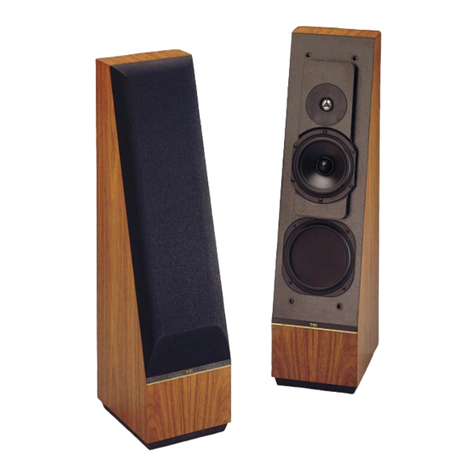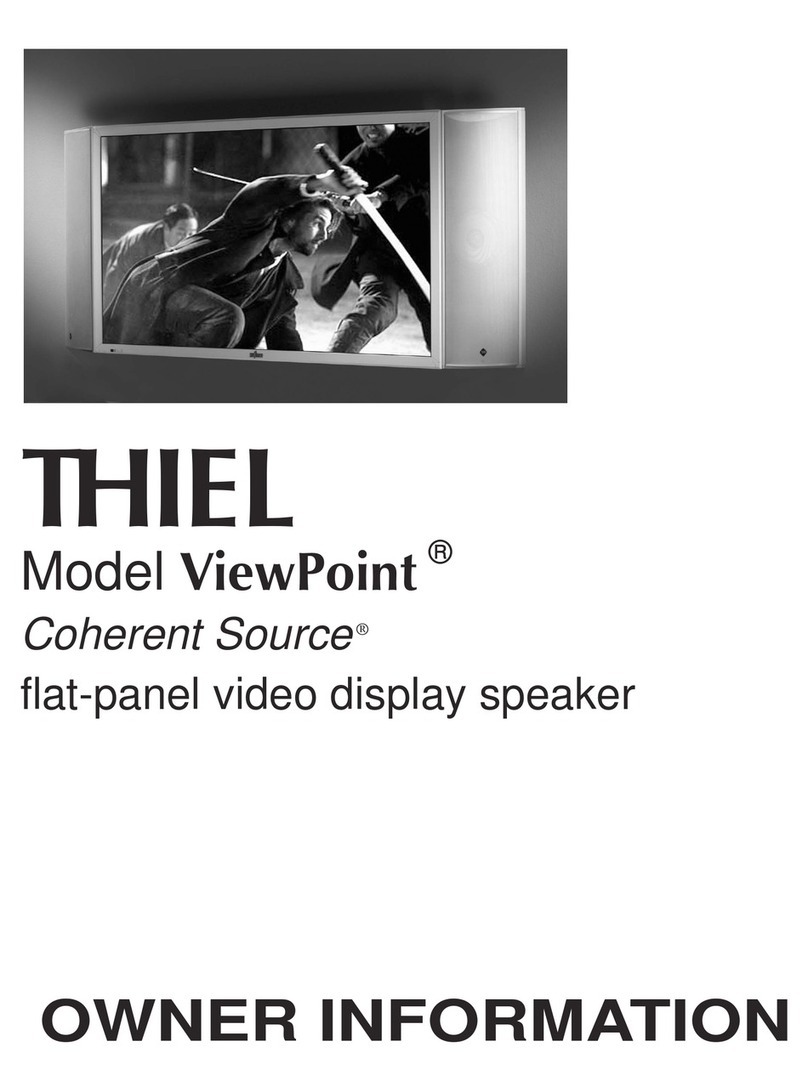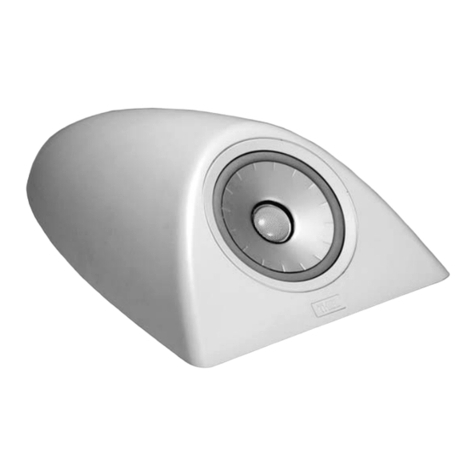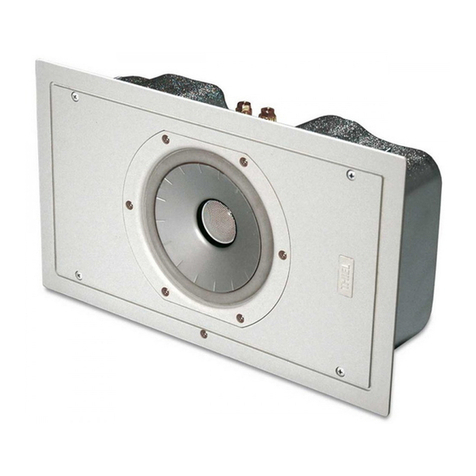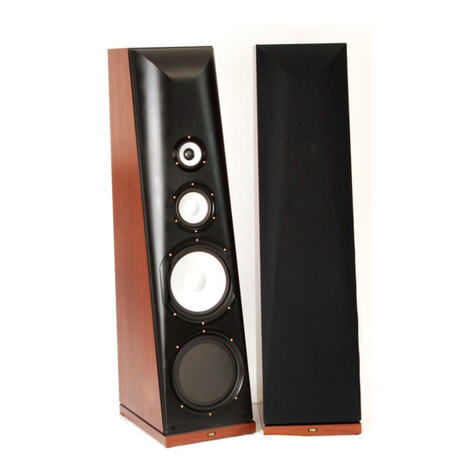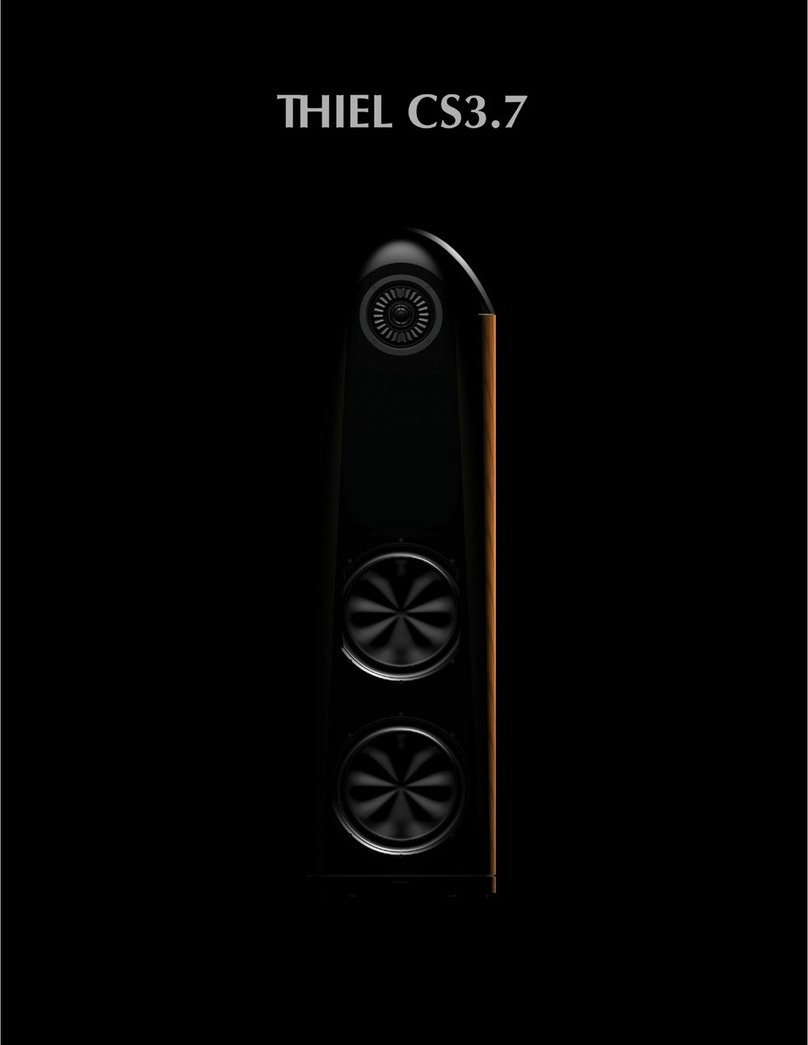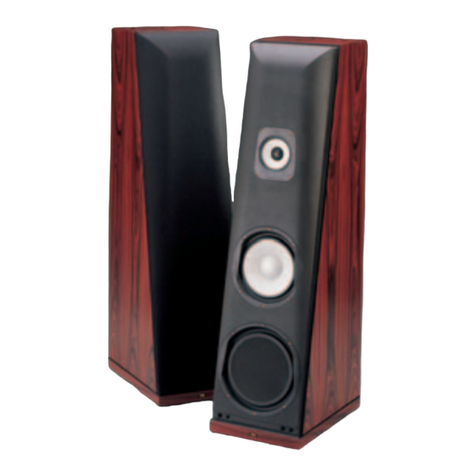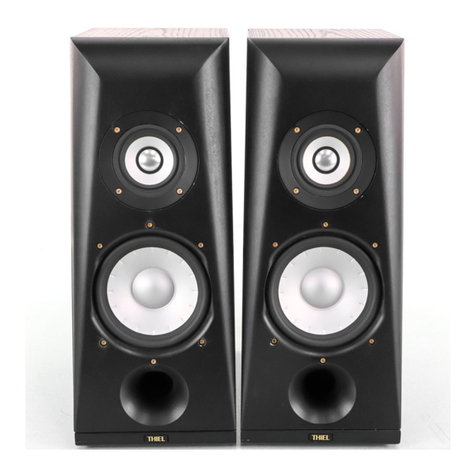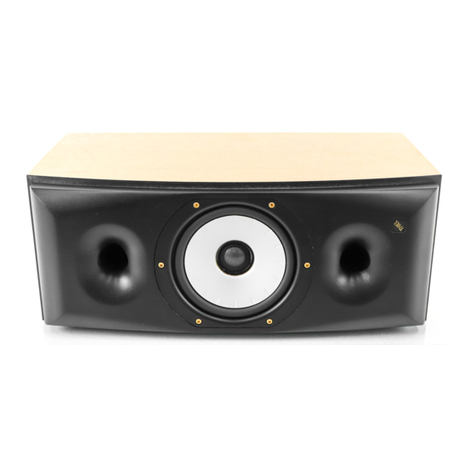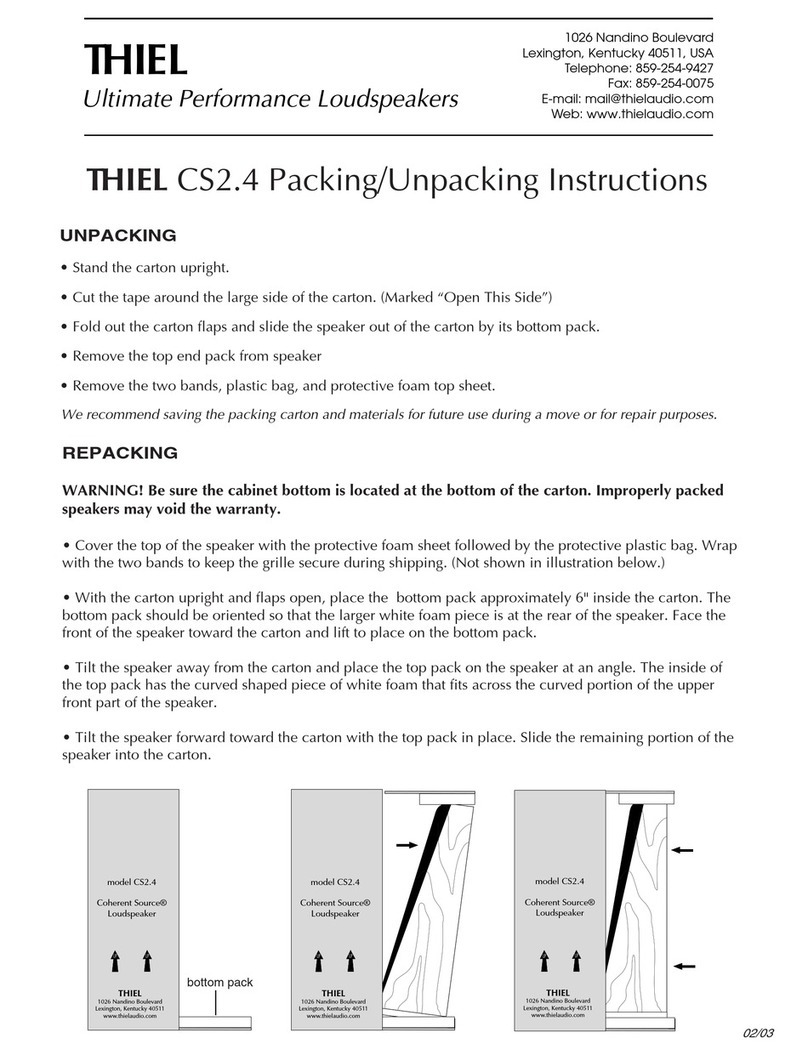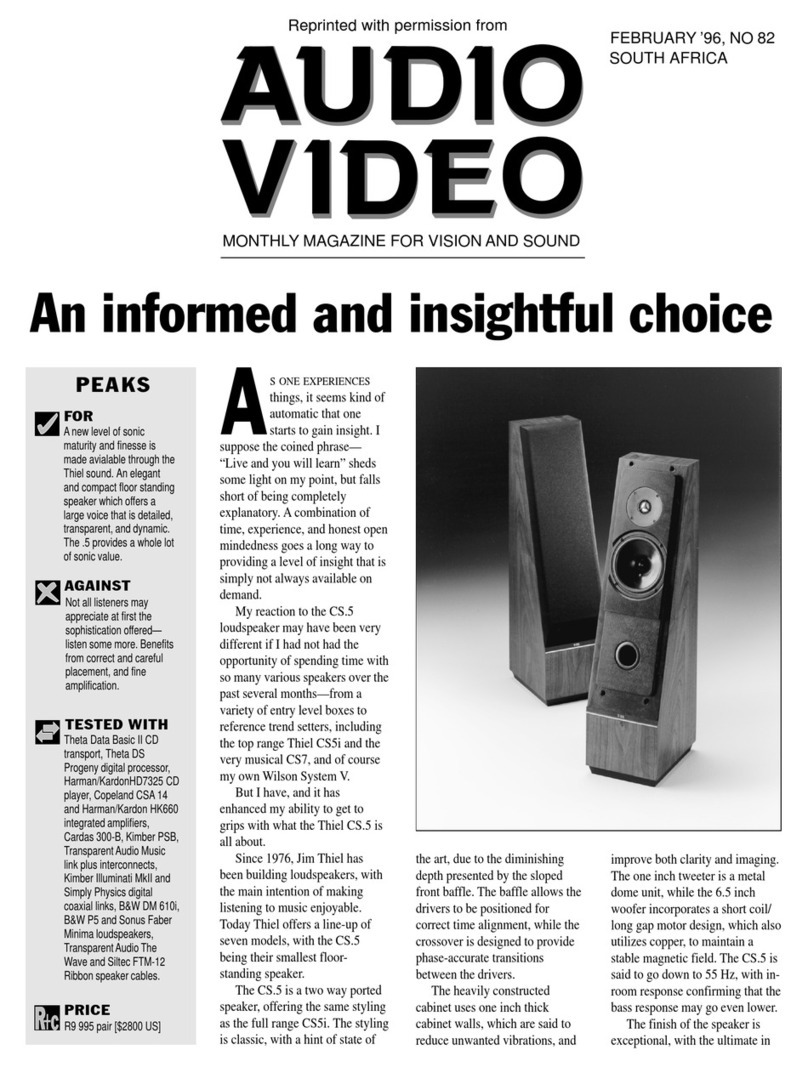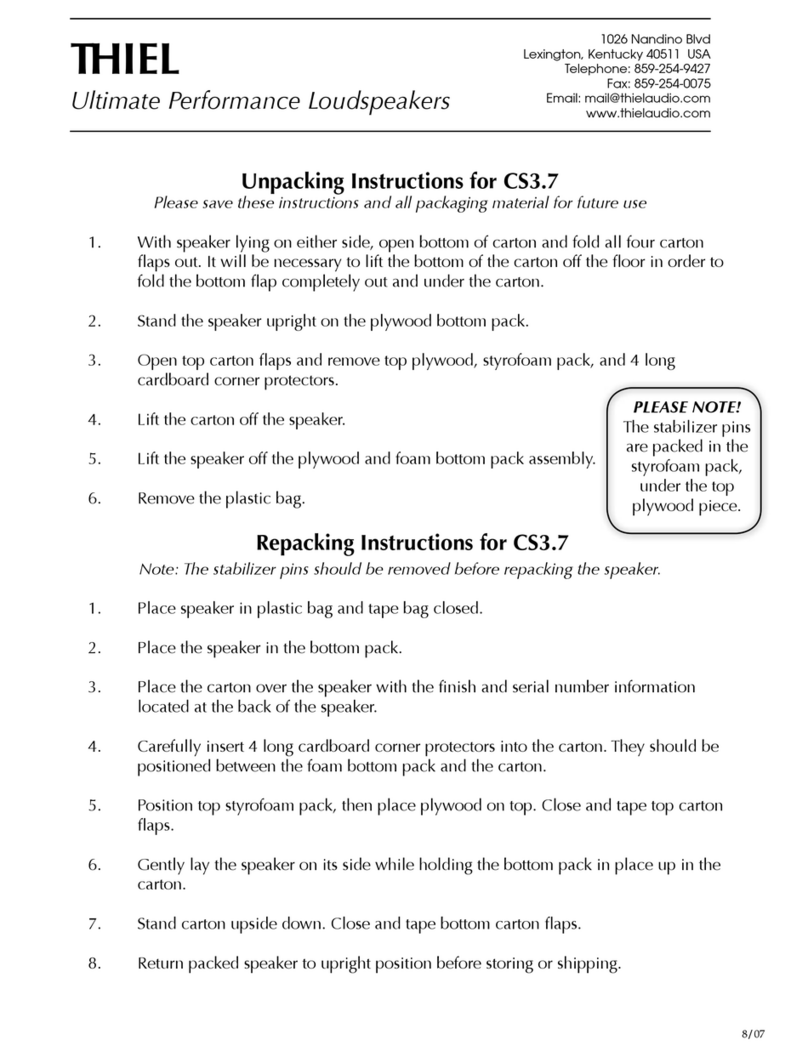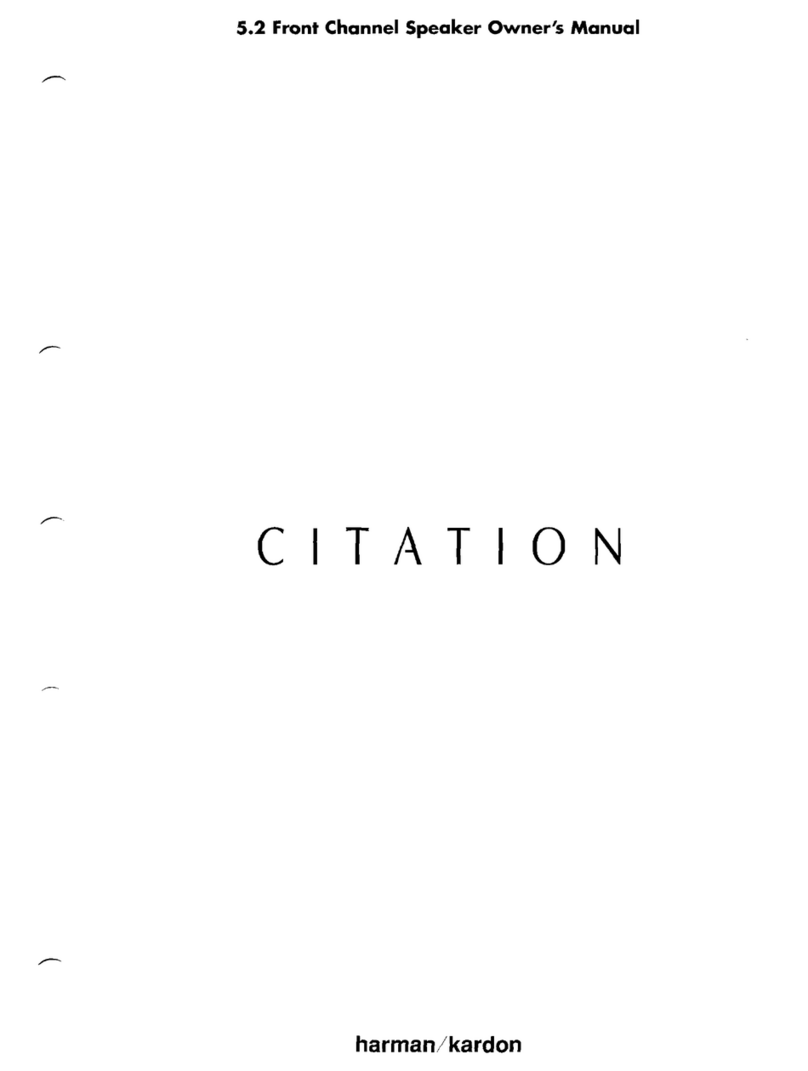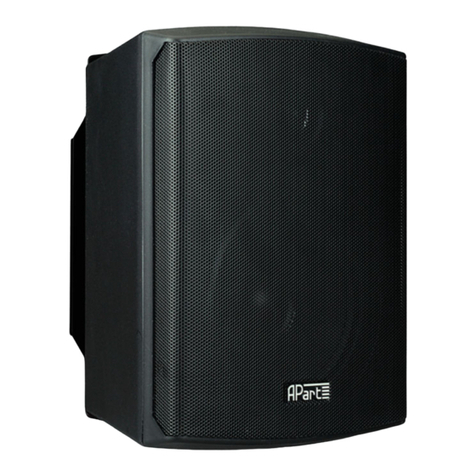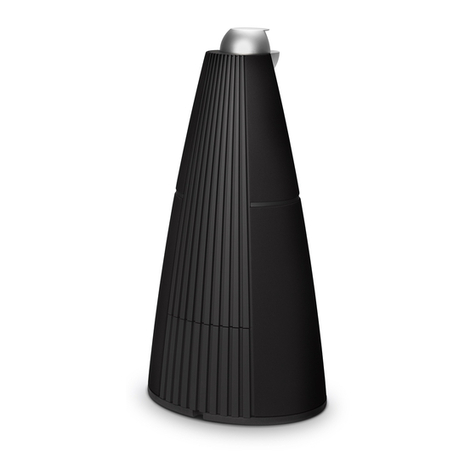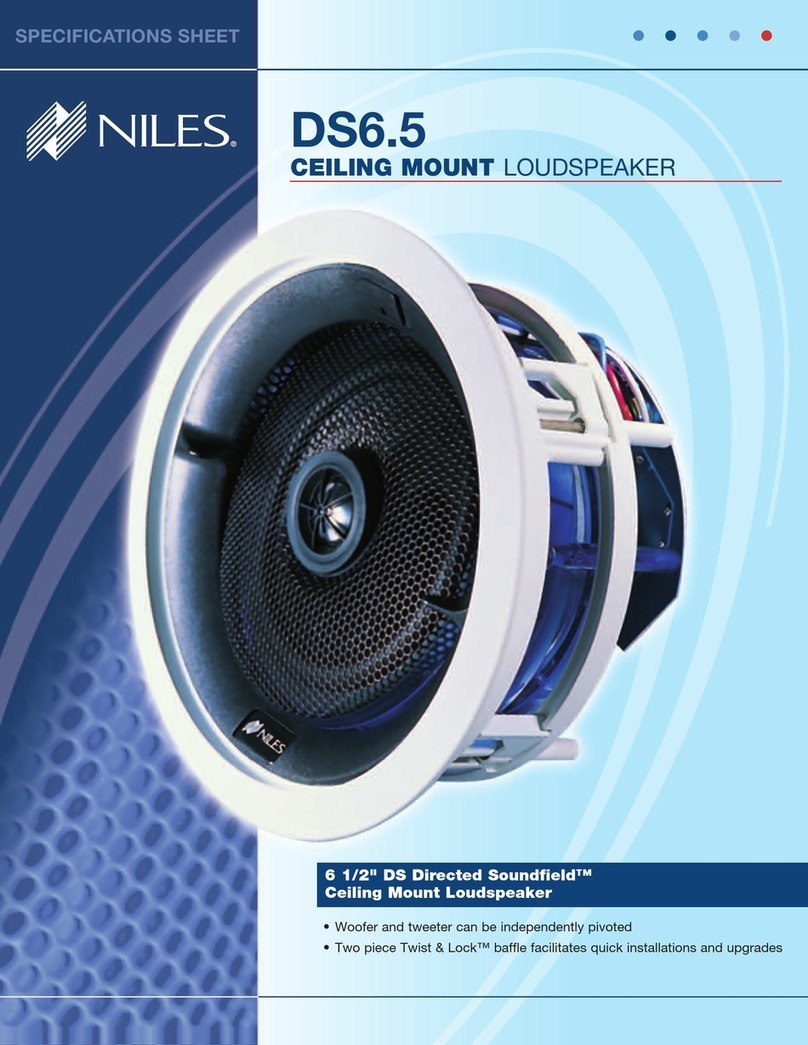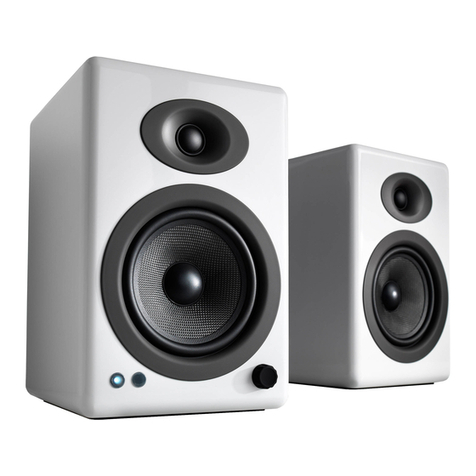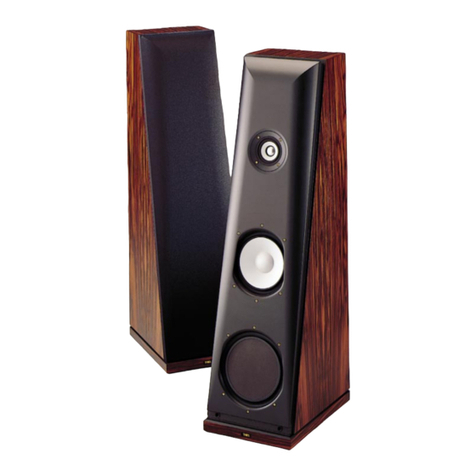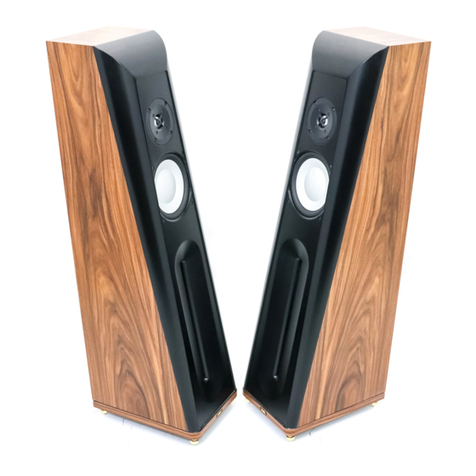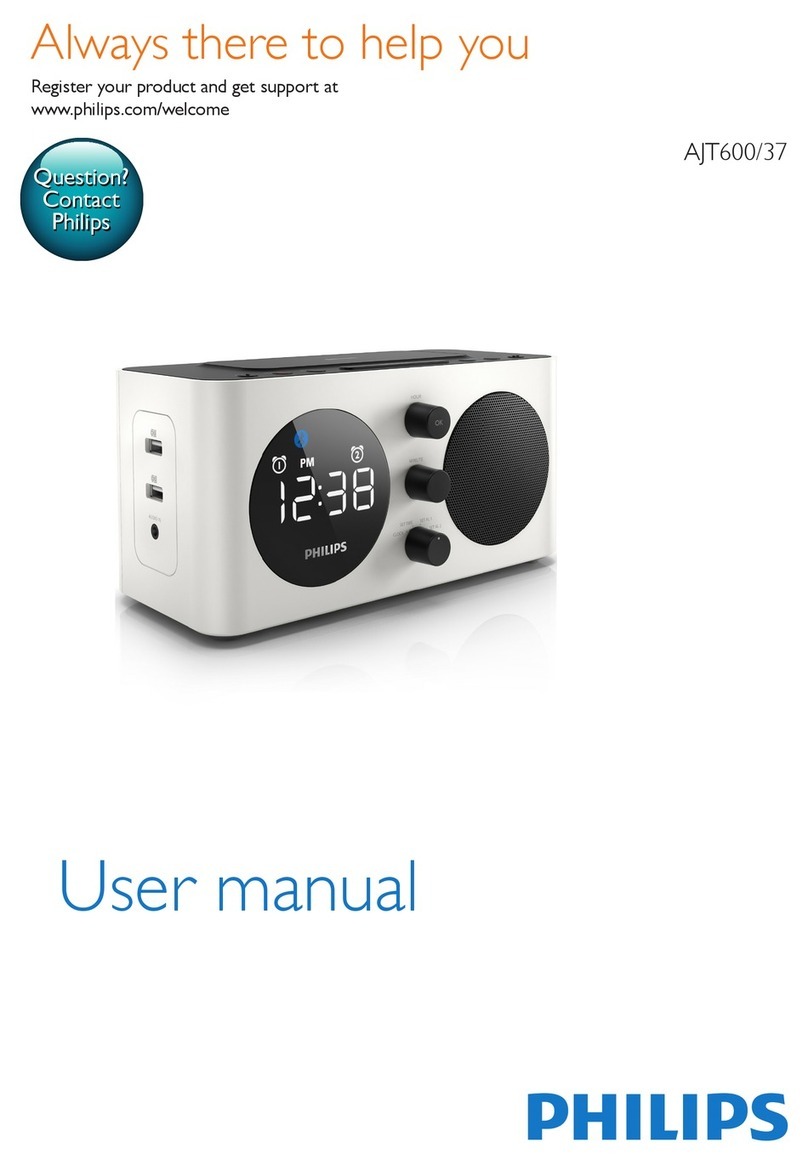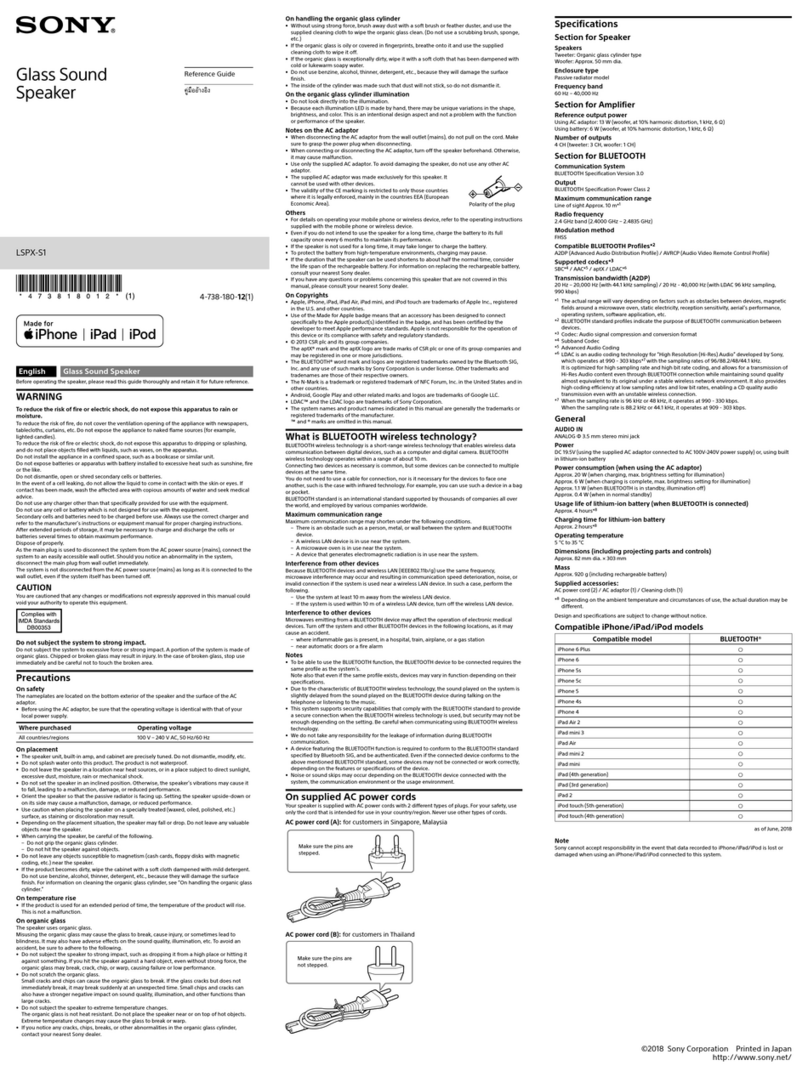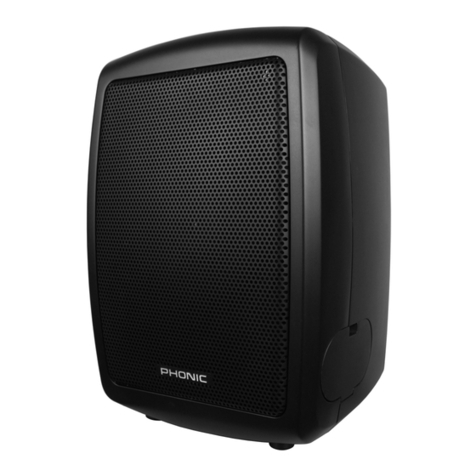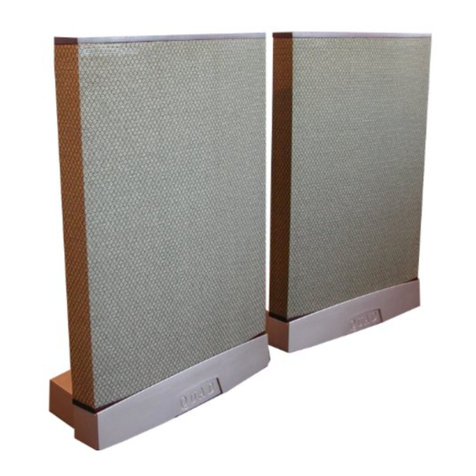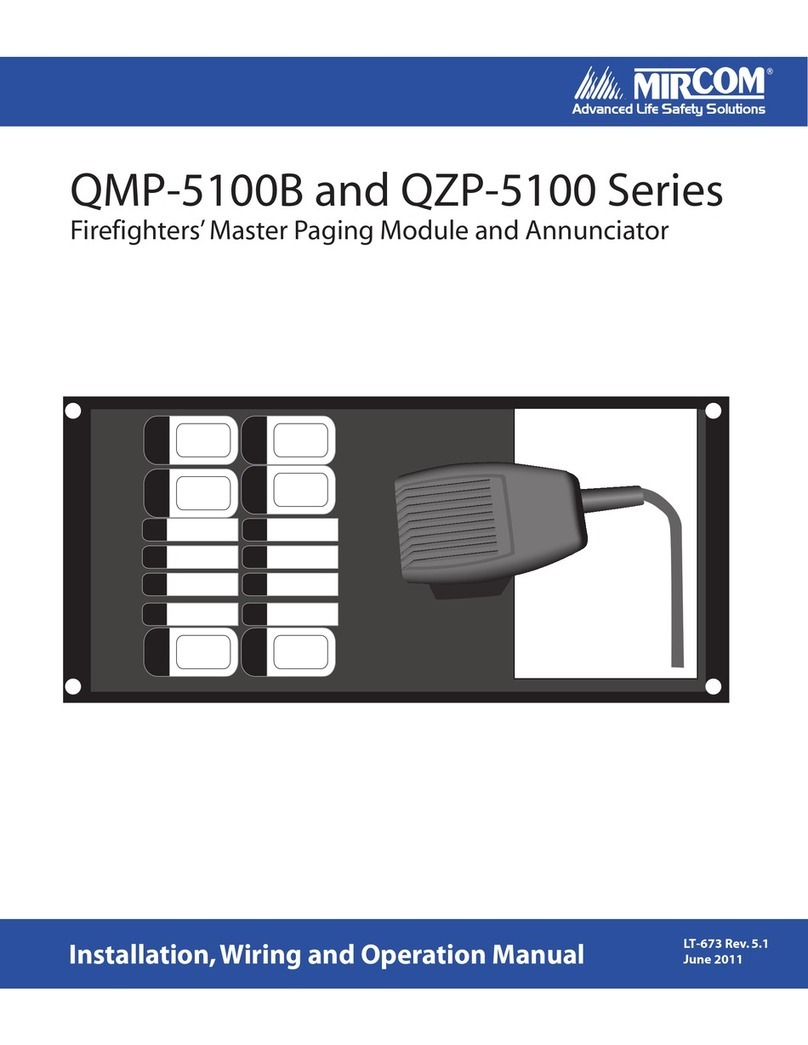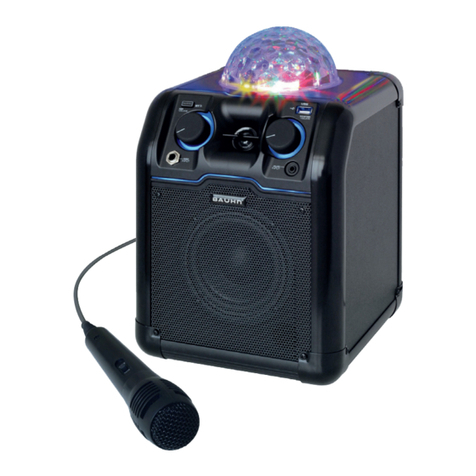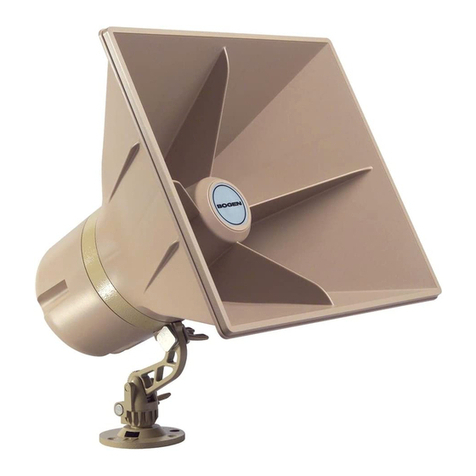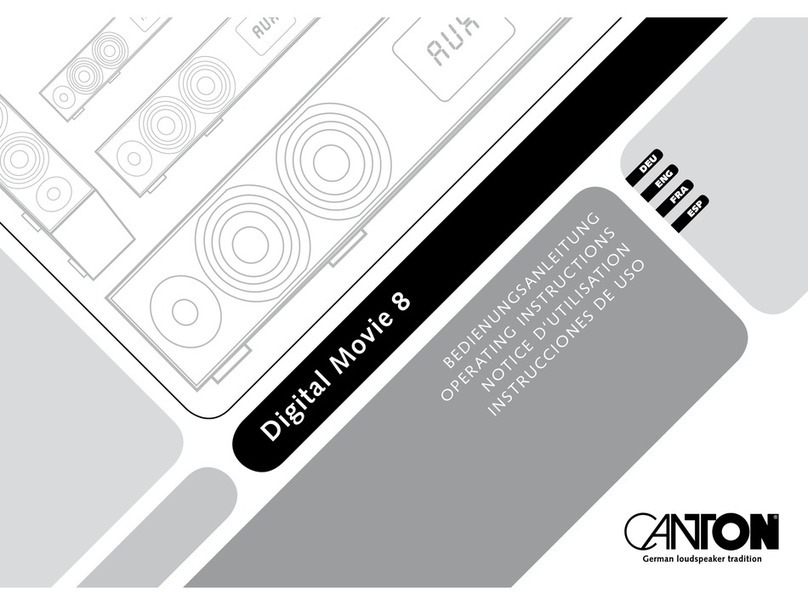
SPEAKER PLACEMENT
The DewPoint can be placed in a wide variety of outdoor (and indoor) locations on ceilings
and walls provided that it does not receive direct exposure to water. The speaker’s wedge
shaped cabinet and coaxial driver mounting allow the DewPoint to optimize the coverage
area for a variety of speaker placements and listener positions.
Many steps have been taken to provide a high degree of resistance to environmental
extremes. For best resistance to damage, DewPoints should not be exposed directly to water
such as uncovered in a garden. Mounting beneath an eave or under a covered porch are good
examples of recommended placement.
SURFACE MOUNTING INSTRUCTIONS
It is important that the DewPoint be mounted securely to prevent unwanted vibration.
The DewPoint is secured to its mounting surface with two weather resistant stainless steel
screws, one located along the rear edge of the cabinet, and one in the front located under
the THIEL logo. The logo is attached with removable adhesive and is removed by pushing it
from the speaker by inserting a small Phillips screwdriver, or something similar, through the
cabinet’s mounting hole from the back. A mounting template is included with the speaker to
assist in accurately positioning the mounting holes in the wall or other mounting surface.
Tape the template to the mounting surface in the desired position. Drill the two holes in
the positions marked on the template with a 1⁄16" drill bit to a depth of 2 inches. Any holes
in which a wall stud is encountered (where material is continued to be drilled beyond a depth
of approximately 1⁄2") should be left as-is, and the included #6 mounting screws should
be used for these holes. Any holes which do not drill into a wall stud (where the drill “falls
through” after the first 1⁄2" of depth) should be enlarged to 1⁄4" with another drill bit, and the
included molly bolts should be used for these holes. To install the molly bolts, insert the molly
bolt into the wall and tighten the screw until the molly is secure with its flange tight against the wall. Then remove the molly bolt
screw.
Mounting screws are also included for installation on masonry walls. To install using the enclosed, blue coated masonry
screws, the mounting holes on the DewPoint must first be enlarged using a 5/32" drill bit. Proceed with installation as instructed
in the previous paragraph.
Connect the speaker wires to the speaker, position the speaker in place and drive the two screws through the cabinet’s holes
and into the mounting surface using the appropriate type of screw for each hole (either a wood screw or a molly bolt). Replace the
logo by pressing it into the recess in the front of the speaker.
CONNECTING THE SPEAKERS
Speaker wire can be routed through a drilled opening in the mounting surface for a hidden connection. The DewPoint uses
5-way, weather resistant, gold plated binding posts which accept several types of speaker cable termination. Make sure that all
connections are tight.
It is essential for proper performance that all speakers in a system be wired in the same polarity. The speaker’s input
terminals are color coded to facilitate this. The wire connected to the red ringed input terminal of each speaker should connect
to the respective positive (+) output terminals of the amplifier; the wire connected to the black ringed input terminals should be
connected to the respective negative (–) output terminals of the amplifier. The speakers should be connected to the amplifier with
high quality cable to ensure minimal loss of power and proper control by the amplifier.
ASSOCIATED EQUIPMENT
The DewPoint is a very high quality sound reproducer and will benefit from use with high quality associated equipment. Since it
is extremely accurate, it will reveal sources of distortion generated elsewhere in the system. For example, distortion resulting from
poor recordings or inferior electronics will be reproduced accurately. Consult THIEL or your authorized dealer for advice as needed.
The DewPoint’s wedge shaped cabinet and
coaxial driver mounting optimize the coverage
area for a variety of speaker placements such
as this outdoor grilling area
a single DewPoint mounted under the eave




